The Best Non-Toxic & Safe Baby Wipes (40+ Brands Ranked)

Over the past 2 weeks we researched 40+ of the most popular baby wet wipes to find the best non-toxic choices for your little one’s sensitive skin.
Today we’ll be looking at:
- The safety of using baby wipes.
- What it means when a wipe says it’s biodegradable or compostable.
- Why you should never flush wipes.
- The toxic ingredients you should avoid.
- Ratings for 40+ of the most popular baby wipes.
Because baby wipes are used on our children’s most sensitive areas, it’s extremely important to ensure that they’re free of toxic chemicals and irritants.
In our research, we found that many of the top brands available have chemical ingredients that are potentially toxic and dangerous. Many of them are made with polyester or plastic-based cloth derived from petroleum.
However, there are several brands available that offer a baby wipe that’s as free of toxic chemicals as possible, and some are even made from natural materials like chlorine-free wood pulp.
While it’s true that baby wipes aren’t an absolute necessity, many parents find them far too convenient to give them up.
If baby wipes are an indispensable part of your parenting repertoire, we’ll arm you with the knowledge you need to buy the best non-toxic and safe wipe.
The Best Non-Toxic Baby Wipes
We reviewed the ingredients of 40+ of the top-selling baby wipes on the market. They’re rated on this scale:
– These products are the best of the best. They contain great ingredients, are non-toxic and are often the best choice for our environment.
– These products are typically quite good, but don’t go above and beyond like our best choices.
– These products are typically okay, but have some issues that make us unable to give them a “Good” rating. Often times they contain ingredients or materials that are questionable.
– These products typically have toxic ingredients or issues that make them dangerous or unsuitable to use. These products should typically be avoided.
Non-Toxic Baby Wipes Rated: Best
These clean baby wipes are the best of the best. They all have safe ingredients, and you can feel safe using them. Only two of the brands we investigated deserved a rating of best.
Jackson Reece

These are some of the best wipes on the market. Made with chlorine-free wood pulp and few non-irritating ingredients, it’s easy to give these a top rating.
Ingredients
Jackson Reece

Much like the other Jackson Reece product on our list, these get a top rating. The only difference is that these use organic ylang ylang essential oil as a fragrance. We would recommend the non-scented version over this scented version, but this one is also excellent.
Ingredients
ATTITUDE

Made with chlorine-free cellulose fiber, we’re happy to give a great rating to these wipes made by Attitude. They do have sodium benzoate for those that would prefer to avoid it, but other than that, the ingredients list is great for a baby wipe.
Ingredients
Potential irritants: 1*
Good Baby Wipes
The Honest Company

Honest says their wipes are 100% plant-based but will not disclose exactly what the material is made of. In terms of ingredients, they’re fairly good with none that stand out as must-avoid chemicals.
Ingredients
Potential irritants: 2*
Burt's Bees Baby

Burt’s Bees wipes are relatively okay, but include phenoxyethanol which we would prefer to avoid. Because of this and the other 2 preservatives—sodium benzoate & potassium sorbate—we can’t give them a great rating.
The material is chlorine-free non-biodegradable and plant-based, but it’s not clear exactly what that is.
Ingredients
Potential irritants: 2*
Cloud Island (Target Brand)

Surprisingly, Target’s private label brand of baby wipes is quite good. None of the ingredients are blatantly dangerous, and since they’re available at all Target stores, they’re easy to find as well.
Ingredients
Potential irritants: 1*
Babyganics

Our main issue with Babyganics is that the brand is greenwashing—making their products seem more eco-friendly than they really are.
While there is a long list of ingredients in this product, none of them are “must-avoid” chemicals.
The material of the wipes is a blend of tencel and polyester, which could be better.
Ingredients
Potential irritants: 1*
Earth's Best

The ingredients of these wipes are okay, but they do have both phenoxyethanol and potassium sorbate as preservatives.
The rest of the ingredients are fine, and the wipe itself is made from chlorine-free viscose and polyester—we’d prefer better materials.
Ingredients
Potential irritants: 1*
Bloom Baby

These wipes contain phenoxyethanol, a preservative we prefer to avoid. Although it’s more benign than parabens, it has been linked to skin irritation.
While these wipes aren’t the best, they’re still okay.
The company reports that the material is made of elemental chlorine-free eco fibers, which is a lot better than many other wipes which use plastic-based materials.
Ingredients
Potential irritants: 1*
Eco By Naty
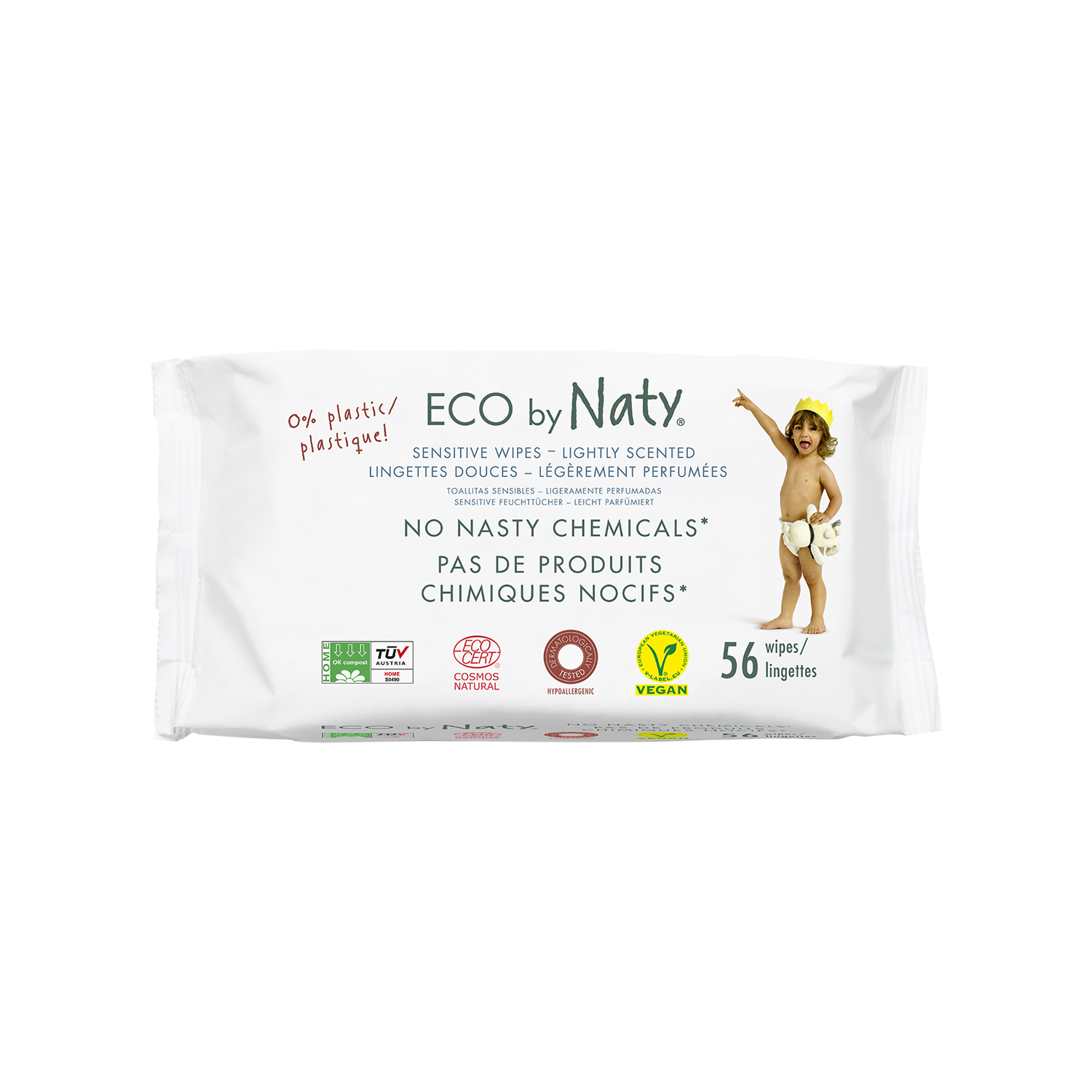
These wipes have several organic ingredients, and none stand out as being bad.
The brand states that they’re made with “natural and renewable plant-based material” which is a plus.
While we can’t give them top ratings because of a few potentially-irritating chemicals like sodium benzoate & propanediol, they’re still better than most wipes on the market.
Ingredients
Potential irritants: 1*
Parasol Co

Parasol’s wipes are made from spunlace, a synthetic material. While we would prefer a more natural material, the rest of the ingredients are quite good and because of this, we can recommend them.
Ingredients
Iffy Baby Wipes
DYPER

Dyper baby wipes have a very simple ingredient list and are made from bamboo viscose, which is far better than many wipes that use synthetic ingredients.
These wipes have no preservatives, which is actually something of a concern because of bacteria. Because of this risk, we unfortunately can’t give them a good rating.
Ingredients
Huggies

Contains enough iffy ingredients, including fragrance, that we can’t recommend this product. Material is made of polypropylene and wood pulp.
Ingredients
Potential irritants: 2*
Up & Up (Target)

It’s unclear what these wipes are made of, but it should be assumed that the material is petroleum-based.
Our main concern is the inclusion of tocopheryl acetate, which can be contaminated with hydroquinone, a carcinogenic chemical. For this reason, we can’t recommend these wipes.
Ingredients
Potential irritants: 1*
Up & Up (Target)

These wipes may be fragrance-free, but with phenoxyethanol and potential irritants like tetrasodium glutamate diacetate that we can’t recommend them.
We were unable to determine what material is used in the wipes, but it’s likely polypropylene or similar.
Ingredients
Potential irritants: 2*
Bloom Baby

These wipes have enough sketchy ingredients (like phenoxyethanol) that we’d recommend better wipes over them.
Ingredients
Potential irritants: 1*
Brandless

Note: Brandless has been going through financial issues and this product may no longer be available.
While the wipe itself is made of 100% plant-based fibers, their inclusion of ingredients like benzyl alcohol, sodium hydroxide and benzoic acid make us unable to recommend these wipes.
Ingredients
Potential irritants: 2*
Thrive Market

These have a large number of preservatives and we would just prefer wipes with safer ingredients.
This, along with the fact that they’re made of blend of 70% PET (plastic) / 30% viscose makes us unable to recommend them.
Ingredients
Potential irritants: 1*
365 Everyday Value (Whole Foods Brand)

365 Value is a private label brand of Whole Foods, so we were disappointed to learn that they’re made of polypropylene (petroleum-derived plastic).
They also include enough other iffy ingredients that we can’t recommend them.
Ingredients
Potential irritants: 1*
Parent's Choice

Walmart won’t disclose what their wipes are made of, but they’re surely not made of a preferred material like cotton. Along with phenoxyethanol we can’t recommend them.
Ingredients
Potential irritants: 2*
WaterWipes
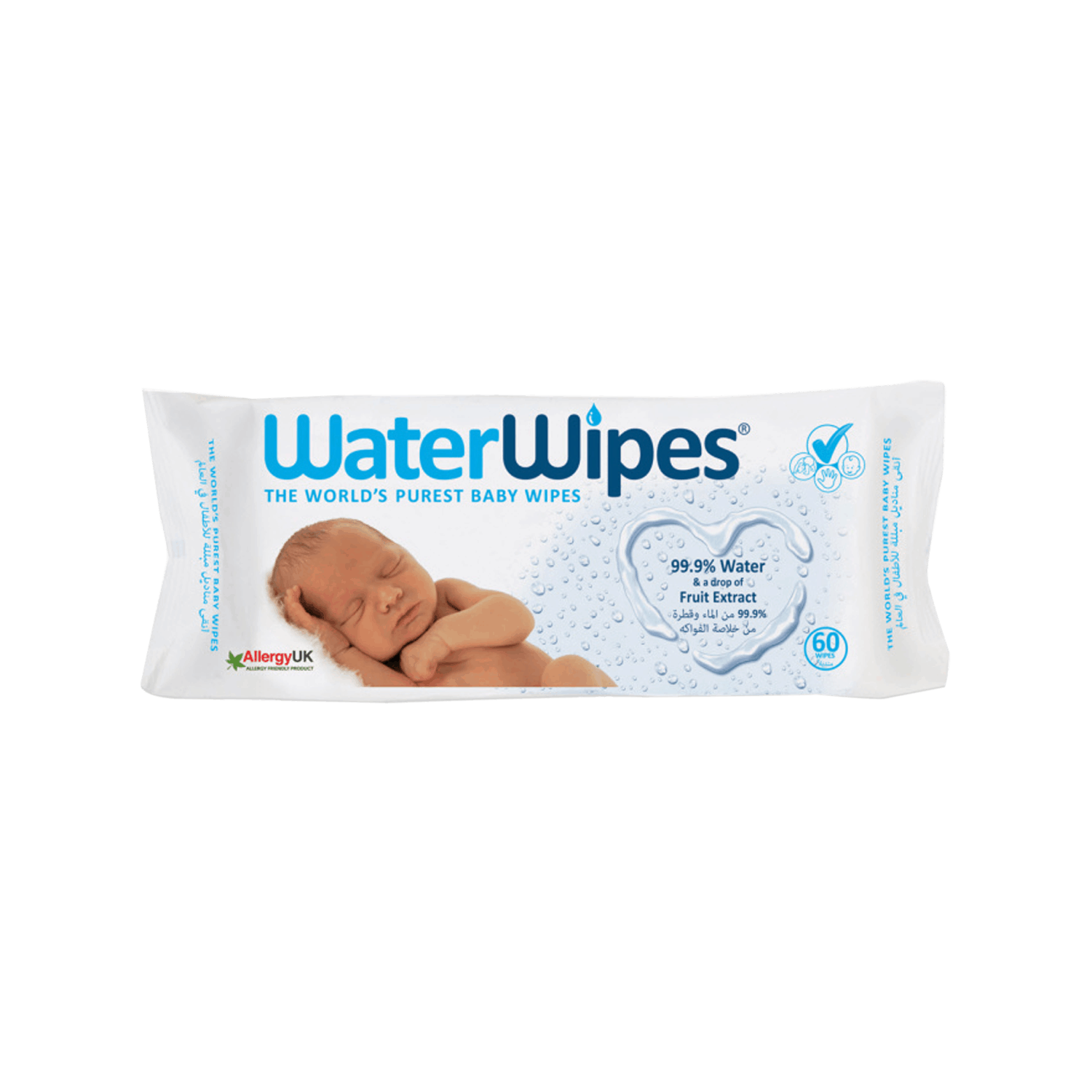
These wipes are heavily promoted as being the best natural baby wipes. They advertise themselves as being only 2 ingredients: water and grapefruit seed extract.
However, there is something very fishy about them.
A few months ago, they disclosed on their website that they contain benzalkonium chloride as a result of the grapefruit extraction process. You will not find this disclosed on the packaging.
While this is in trace amounts, this chemical is quite toxic and we do not feel comfortable recommending these wipes because of this and the fact they’re made of 80% polyester.
Ingredients
Fifi & Friends

These wipes are made from organic cotton, which is great. Out biggest issue is that they have fragrance without disclosing exactly what kind of fragrance it is.
Since fragrance is often used as an umbrella term for thousands of chemicals that don’t need disclosure, we cannot recommend them.
Ingredients
Potential irritants: 1*
Bad Baby Wipes
Amazon
Unfortunately, Amazon’s line of baby wipes leaves something to be desired. Along with the material being viscose, polyester & polypropylene, we can’t recommend this product.
Ingredients
Potential irritants: 2*
Huggies
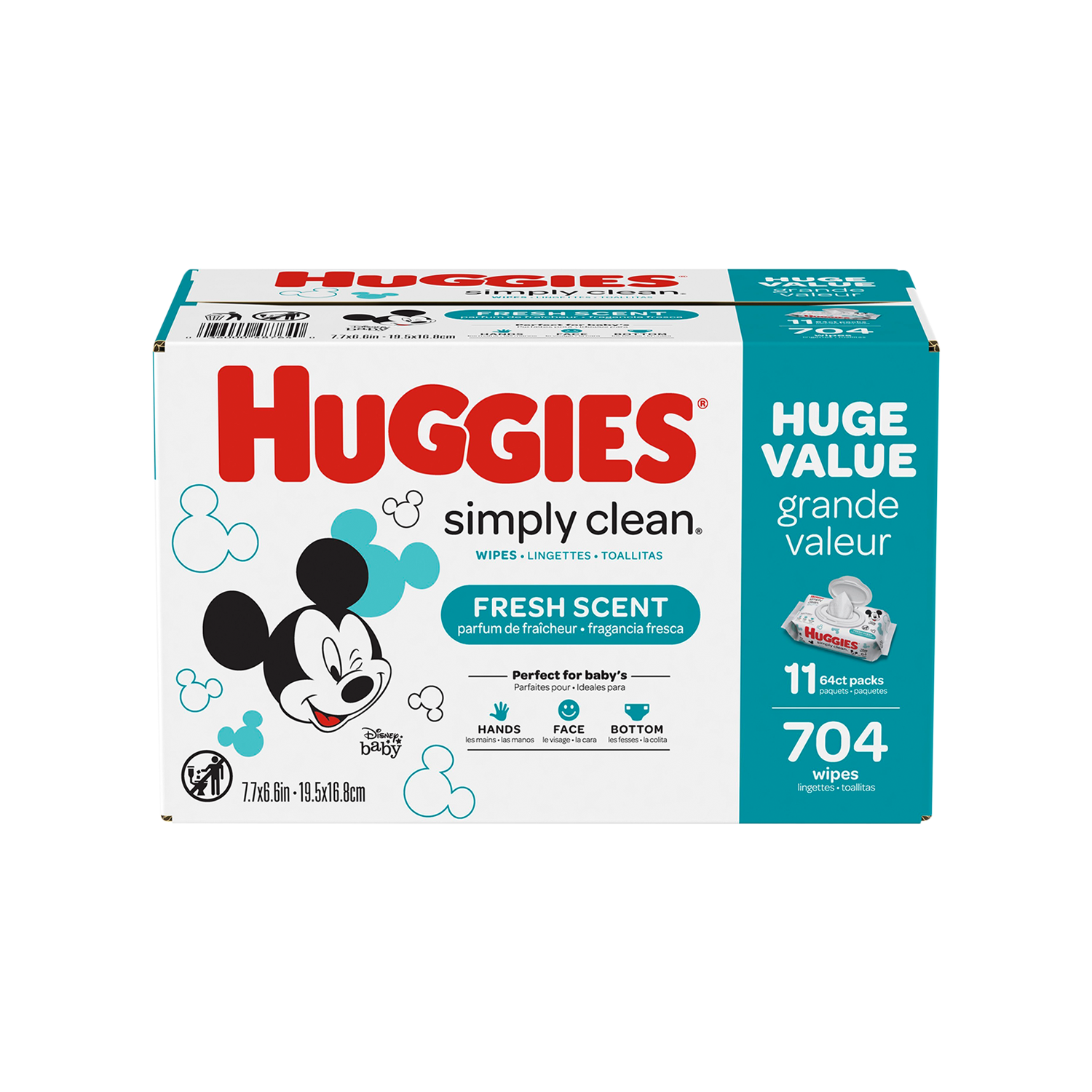
Like most Huggies products, these are not recommended. Being filled with fragrance, polysorbate-20 (which can be contaminated with 1,4-dioxane) and made from polypropylene material, these aren’t recommended.
Ingredients
Potential irritants: 2*
Pampers
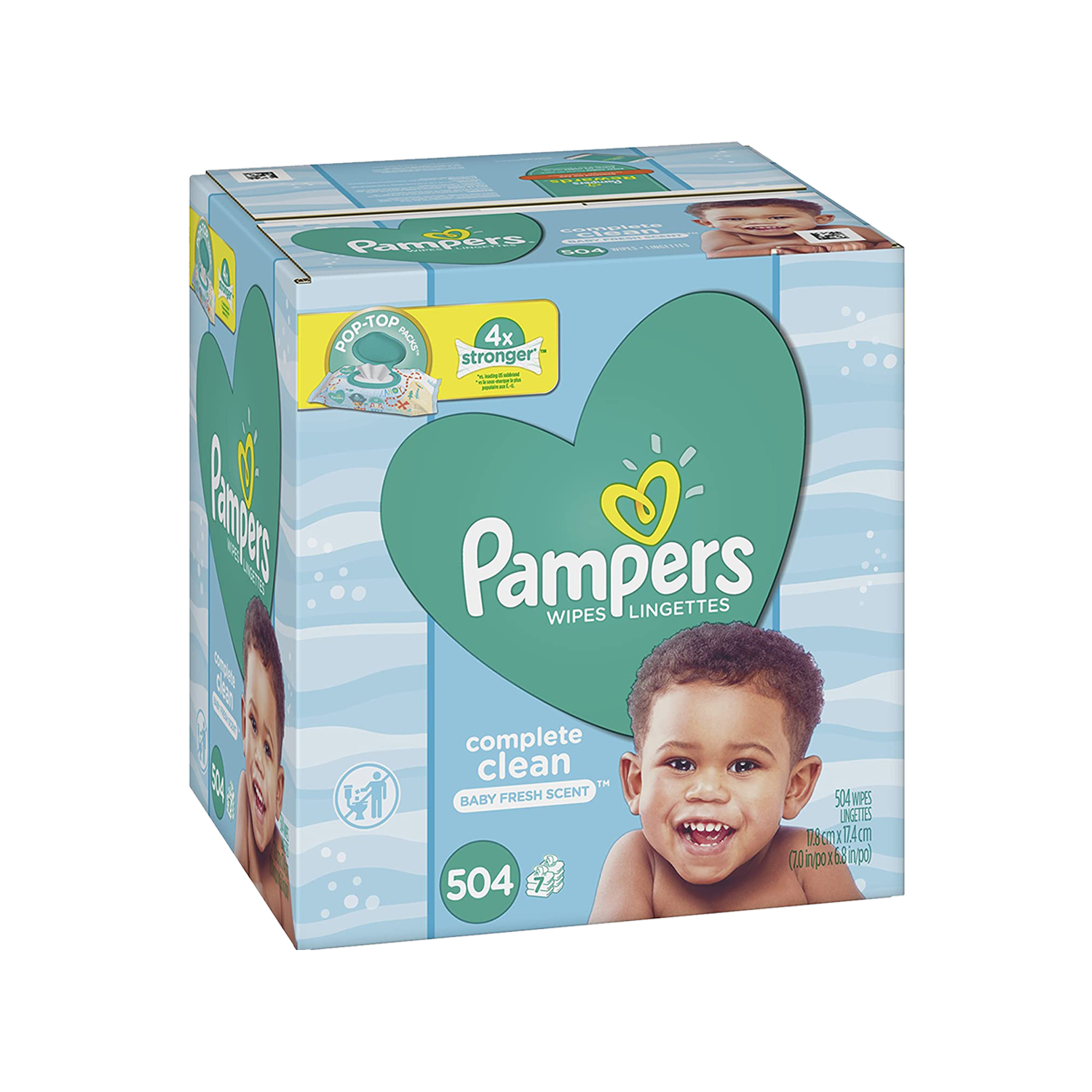
These polypropylene-based wipes have toxic petrochemicals PEG-40 and PPG-16 along with mystery fragrance. Because of these reasons, we can’t give them a good rating.
Ingredients
Potential irritants: 1*
Lansinoh

Baby wipes filled with toxic ingredients, including parabens. Strongly recommended to avoid.
Ingredients
Potential irritants: 2*
Bum Boosa

Unfortunately, while these wipes are made of chlorine-free bamboo material, they have polysorbate 20 which can be contaminated with toxic ethylene oxide & 1,4-dioxane. For this reason we can’t recommend them.
Ingredients
Potential irritants: 1*
Huggies
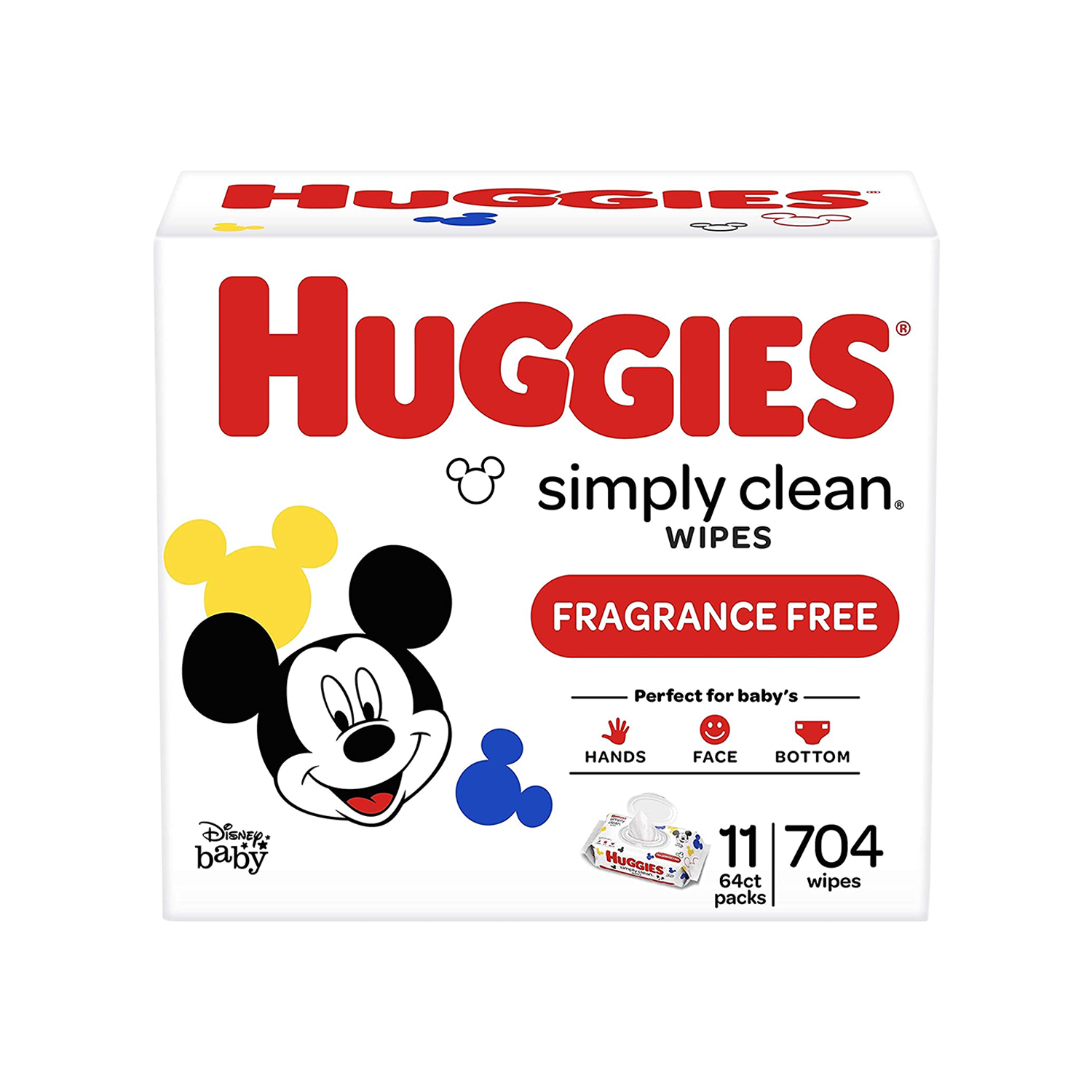
While this version of Huggies wipes are fragrance-free, they still have ingredients that should be avoided, like polysorbate-20, which can be contaminated with 1,4-dioxane. They’re also made from polypropylene material. For these reasons, they’re not recommended.
Ingredients
Potential irritants: 2*
Huggies
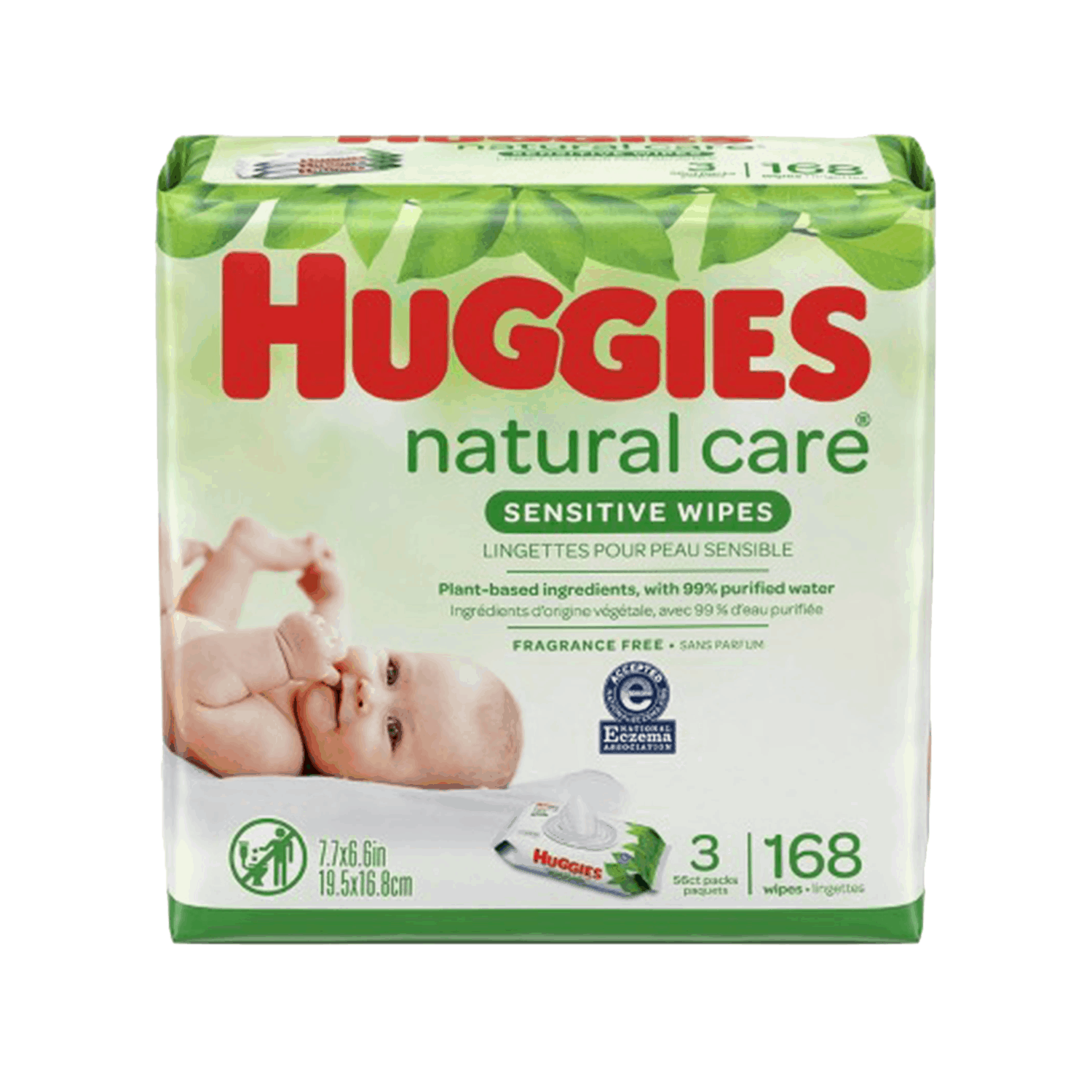
These wipes contain Butoxy PEG-4 PG-Amodimethicone which can be contaminated with ethyl oxide, a toxic chemical. The other iffy ingredient is polysorbate-20, which can be contaminated with 1,4-dioxane.
Ingredients
Potential irritants: 2*
Aleva Naturals

Although these wipes are made from bamboo, they contain PEG-40. This ingredient, hydrogenated castor oil, is at risk of being contaminated with ethylene oxide and 1,4-dioxane, both of which are toxic carcinogens.
Ingredients
The Safety Of Using Baby Wipes
Since wipes can be cheaply made, some manufacturers are putting awful ingredients in their product with little care for the safety for our children or the environment.
These wipes can sometimes cause visible skin irritation and allergic reactions. What’s worse is that these chemical ingredients could be doing untold invisible damage internally—especially considering that they’re used on a very sensitive area.
Baby wipes can be safe, as long as you’re using those without any toxic or dangerous ingredients.

The Scoop On Biodegradable Baby Wipes
Some modern brands offer “compostable” baby wipes that are typically made out of more eco-friendly materials, like cotton or bamboo rayon.
The truth is this: much like “biodegradable” baby diapers, wipes thrown into the trash won’t decompose in any reasonable amount of time.
This unfortunate truth is because of the way landfills work. Material can only break down when there is oxygen available, and since landfills are designed to be air-tight, there is simply not enough oxygen available for them to break down.
This also applies to flushing them down the toilet. They aren’t going to break down in the sewer or septic system.
However, some baby wipes can be composted.
Such brands include Jackson Reece, who claim their wipes will degrade in just 6 weeks in a compost pile.
Our ratings list indicates which brands are compostable—there are very few.
Why You Should Never Flush Baby Wipes
Many wipes advertise themselves as “flushable”. While that is technically true, wipes have been causing major issues in our sewer systems.
Most wipes simply do not break down fast enough once flushed. These wipes then accumulate and result in what are known as fatbergs.
If you’re desperate to know what a fatberg is, (and we’re sure you are) here’s what it is.
When you flush a wipe down the toilet, it can tangle up with other things like hair, dental floss, paper towels, cotton swaps, and other things that shouldn’t be flushed down the toilet.
Quickly, this mass starts to accumulate with other wipes and other items that don’t quickly break down and before you know it, a massive nightmare known as a fatberg has been made.
The first fatberg was discovered in London in 2013 and weighed nearly 17 tons. Fatbergs have also been found in the UK and Australia as well and have cost taxpayers millions of dollars.
The moral of the story: Never flush baby wipes even if they’re labeled as flushable.

Beware of the Material Used In The Wipes
All wet baby wipes are made out of cloth. The tricky part is this: the composition of the cloth doesn’t need to be disclosed.
Wipes are typically made of either viscose, polyester, polypropylene or in newer and more eco-friendly brands, cotton.
The four main materials wipes are made of are:
- Polypropylene is essentially plastic—the same plastic used in most disposable diapers.
- Polyester is also plastic.
- Viscose is made from wood pulp. This wood pulp is highly processed and often bleached, but is better than polypropylene and polyester.
- Cotton has started to find its way into the baby wipes market with newer brands. Some brands even use organic cotton.
While many companies disclose the materials used in their wipes—especially if they’re using cotton—many do not.
If you’re looking for the safest non-toxic wipes, those that use cotton, or better yet organic cotton, are the best choice.
Hidden Ingredients You Won’t Find Listed On The Label
The ingredients list of a package of wipes doesn’t necessarily disclose everything in the wipe.
Formaldehyde
You’re not going to find this extremely toxic chemical listed on the back of the wipes, but it can be in there. A 2019 study showed that out of 51 popular baby wipes tested, 24% had released formaldehyde. (4)
The amount of formeldehyde in wipes is very small amounts but can result in allergic reactions on the skin.
Formeldehyde-releasing chemicals are as follows:
- Benzylhemiformal
- Tosylamide/Formaldehyde Resin
- 2-bromo-2-nitropropane-1,3-diol
- 5-bromo-5-nitro-1,3-dioxane
- Diazolidinyl urea
- Glyoxal
- 1,3-dimethylol-5,5-dimethylhydantoin (or DMDM hydantoin)
- Methenamine
- Imidazolidinyl urea
- Sodium hydroxymethylglycinate
- Quaternium-15
- DMDM Hydantoin
- Polyoxymethylene Urea
Phtalates From Fragrance
You won’t find phtalates listed on the package either, but they are often added to the fragrance in wipes to make the scent more long-lasting.
Phtalates are linked with endocrine disruption, lowered sperm counts in males, and thyroid disorders in females.
Luckily, these days manufacturers have got the clue and very few contain fragrance. In our ratings, any wipe that contains fragrance will be given a bad rating.
A Note On Waterwipes & Their Hidden Ingredient
A popular brand of wipes are Waterwipes, which are advertised to contain only water and grapefruit seed extract (GSE). The GSE acts as a preservative—the moist environment inside the wipe container is a breeding ground for mold and bacteria.
However, as of 2020, the brand has changed their ingredients listing to include “trace of benzalkonium chloride”. Benzalkonium chloride is used as a preservative and disinfectant in products.
While they don’t disclose the actual amount benzalkonium chloride used in the wipes, the ingredient is a well-recognized irritant and contact allergen. (5, 6).
Because of this, and the fact that there are better wipes on the market, we don’t recommend them over other brands.
Toxic Ingredients To Avoid In Baby Wipes
The following list of ingredients should be avoided when shopping for baby wipes. Our listings make sure that none of these ingredients exist in the product. If they do, they will receive a bad rating.
- Polysorbate 20 – Treated with toxic ethelyne oxide, which can be contaminated with 1,4 dioxane, a highly toxic chemical that is linked to organ toxicity and cancer.
- Parabens – Toxic preservatives that have been linked to breast cancer, hormonal disruption and skin irritation. Anything ending in “-paraben” such as methylparaben, ethylparaben and butylparaben is included.
- Phenoxyethanol – Considered to be a less toxic preservative, but still linked to skin irritation and eczema.
- Sodium Benzoate – A chemical preservative that’s inconclusively safe. Studies have linked the chemical to ADHD (Attention Deficit Hyperactivity Disorder). It’s also controversial due to its ability to turn into toxic benzene when mixed with ascorbic acid (a derivative of vitamin C).
- Fragrance – Seeing fragrance on a label is never a good thing. This is used as an umbrella term used for hundreds of chemicals that don’t need to be disclosed. It’s also often mixed with phthalates—linked with endocrine disruption, lowered sperm counts in males, and thyroid disorders in females.
- Propylene glycol – A petroleum-based chemical typically linked with skin irritation and kidney issues when used internally. While this compound is broken down in the body, infants’ ability to do this is much lower than an adult. Because of this, we believe avoiding this chemical is better.
- Polyethylene glycol (PEG) – Petroleum-based penetration enhancer that can be contaminated with 1,4-dioxane, a possible human carcinogen and ethylene oxide, a known carcinogen. Anything that starts with “PEG-” is included.
- Triclosan – Another preservative linked to endocrine disruption, eye and skin irritation, and is very toxic to aquatic organisms. (7)
- Tocopheryl acetate – This is a synthetic version of vitamin E, used as a preservative in skincare. The issue is that it’s sometimes contaminated with hydroquinone, a skin-lightening agent that’s banned in the UK, EU, Japan and Australia. This chemical is a skin irritant and possible carcinogen.
A Note On Preservatives
Because of the nature of baby wipes, they need some sort of preservative to keep them from developing bacteria and mold.
This is true for all wet baby wipes.
While mold can often be visible to the eye, many types of bacteria are microscopic and cannot be seen by the naked eye. These contaminants can cause serious infections, especially for those with weak or compromised immune systems—this includes babies.
The problem that arises is that some baby wipes don’t disclose any type of preservative whatsoever.
This could only mean one of two things:
- They’re using an undisclosed preservative.
- They’re not using any preservative at all, meaning the product could contain contaminants.
Because of this reason, we must be cautious of wipes that don’t disclose any preservatives.
This could mean that they’re either using a preservative that could potentially be of concern, or the wipes could develop mold or bacteria if not used up quickly.
In our product ratings, we take a close look at the preservatives used—or the lack of preservatives used.
2 Comments
-
Victoria
Have you looked at Abby and Finns wipes? They have 4 ingredients: water, soybean amino acid, organic aloe, and vitamin e (I believe naturally derived).

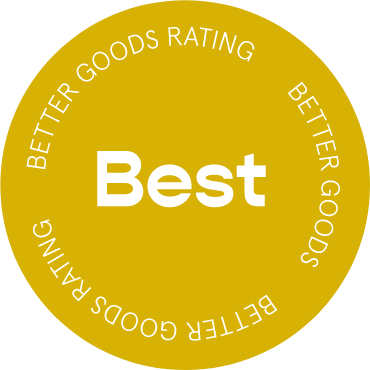







Krissy B
Hi there thank you for this very well explained review and list of brands. I am so grateful for the way you break down all ingredients and the science behind them. This is exactly how my brain works for Everything we use!! I did not see popular brands like honest or Millie moon or seventh generation on your list. Did you read those? Would love to see the full list of where all 40 brands fell into your categories. Will be a first time mama! 🙂